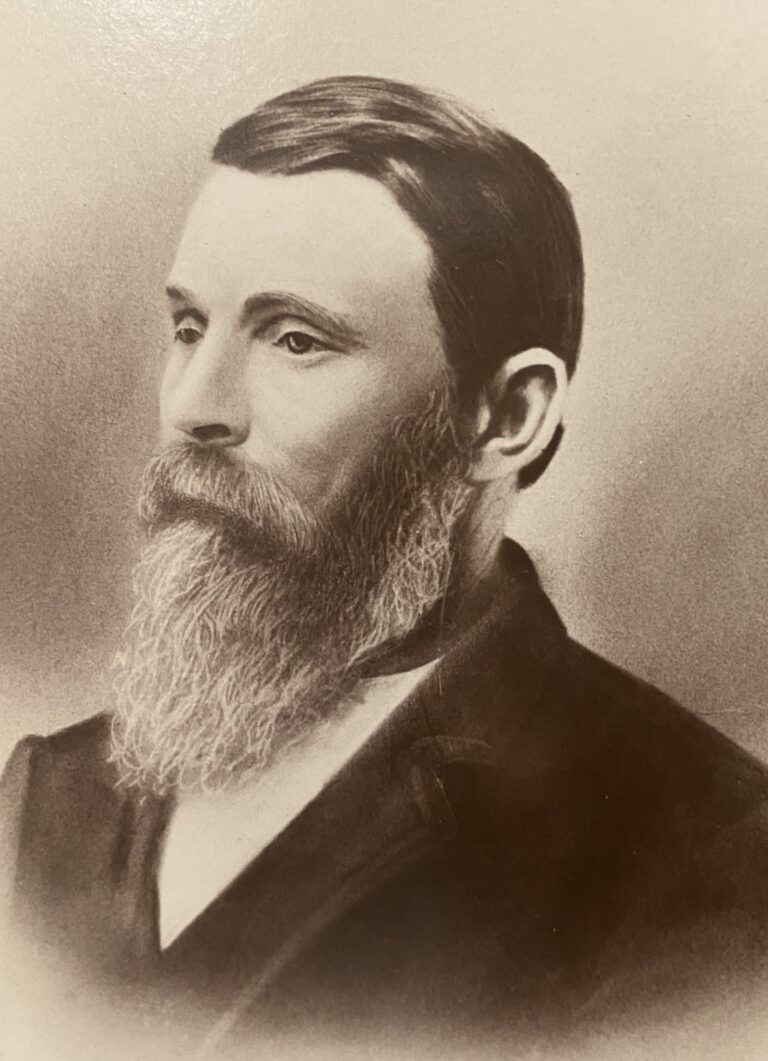Oregon Trail – 1845
Christopher Peter Zumwalt was born 1827 in Cote Sans Dessein Township, Callaway, Missouri, a difficult birth for his mother Elizabeth, who died a month after his birth. Before the age of two his father also died, and he was taken in by the Joseph Hughart family as his guardians. The Hughart’s, thus, became the only family he really knew.
In 1845, at age 18, he and his adopted family began the long trek to the Oregon Territory. They traveled with the “Savannah Oregon Emigrating Society,” mentioned in my story about the Officer, Cant, Aldrich, and other families in “Connections in Butler Basin – A Web of Pioneering Families.” Of particular note is that Christopher was among those that traveled the notorious “Meek Cutoff,” a story well told in “Terrible Trail : The Meek Cutoff, 1845” by Keith Clark, 1966. An account of the wagon train mastered by Solomon Tetherow can be read HERE.
Christopher spent the winter of 1846 near Forest Grove, splitting rails to eke a living, with stories that told he was shoeless, having worn out his boots on the Trail. By 1849 he found himself 10 miles north of Dalles in Perrydale where he built a 640-acre farm and married Irene Goodrich.
Oregon Trail – 1845
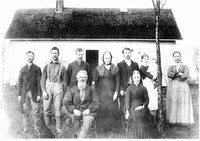
Standing L to R Dick Wallace Sanford Grandma Amanda Barnes John Mrs Sanford Goodrich with infant son Orr Mrs John Goodrich Seated William Irenes brother and Sarah Barnes Goodrich
Irene Goodrich was born 1831 in Indianapolis, Indiana to Carmichael “Carmi” and Margaret “Peggy” (Steele) Goodrich. Like Christopher, her family also decided to embark on the Oregon Trail in 1845. Carmi and Peggy, along with eleven of their thirteen children left as part of a large company of wagons out of Independence, Missouri while Christopher was departing about 70 miles north out of Joseph Missouri.
The Goodrich wagon was initially in the group led by Capt. Presley Welch. The companies, leaving from Independence, traveled to about three miles from the Kansas River near the bank of the Big Soldier Creek, where, by prearrangement, the “main company” was to organize, and elect officers. It was estimated that there were approximately 233 wagons, 421 males, 138 females, 448 children [totaling 1007 persons], 3,261 cattle, and 182 horses. On May 15th, Dr. Presley Webb was elected Captain and Stephen H.L. Meek was retained as pilot for $2.50 per wagon. On May 19th a reorganization took place, and the company was divided into three divisions. Each division would take a turn traveling in advance for a week at a time. Captain Presley was to accompany whichever train was in the lead; but each division was to choose its own officers.1
In the summer of 1845, Christopher and Irene travelled, unknown to each other, along that brutal trail to the Oregon Territory. Irene’s family took the regular route to Oregon and settled in the area of Dayton. Christopher, caught up on Meek’s “Terrible Trail,” arrived in Oregon later, but both families settled in roughly the same area, and as we know, Christopher and Irene met and married in 1849. They had eleven children, and one of them, Henry Oliver Zumwalt, we’ll meet later in this story.
Oregon Trail – 1845
As described by Stephanie Flora in her outline of 1845 wagon trains, “an estimated 3000 emigrants traveled over the Oregon Trail to the Oregon Territory in 1845. This was the biggest migration to date, and it is said to have doubled the non-Indian population of the territory.”2
I’ve written in the past about my connection to the Officer-Cooley families, and like the others mentioned above, they were part of the “Savannah Oregon Emigrating Society.” “We like to think that the Officers and Cooleys stayed together as a tight knit family for the whole passage. This would have allowed the single adult males like Jackson L. and Eli Casey Cooley to help Christopher Columbus Cooley and James Officer with their large families. There is some evidence that this did indeed happen, but it cannot be proven with certainty. We do know that Christopher Columbus, Jackson L. and Eli Casey Cooley took up adjacent homesteads near present day Woodburn, Oregon after they reached the Willamette Valley. And James and Evaline Officer were only a short distance away near present day Molalla, Oregon. Mathias lived with Jackson L. Cooley for a time and eventually settled near present day Silverton, Oregon.”3
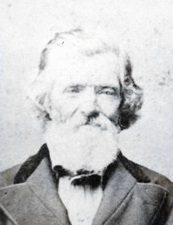
1784 1862
With this group of 1845 emigrants travelled the Rev. James Kimsey, born the year 1784 in Virginia. The son of James Kimsey and Mary (Crowley) Kimsey, and the youngest of nine children, he was no doubt influenced by conversations between his father and older brothers about seeking new land and the potential of the Oregon Territory. Like a “scout” for the large Kimsey clan, he travelled the route with all the other families mentioned above, strangers to each other, and unknowingly, to become bound as family in Oregon. [Note: The Kimsey family name is often found as Kimzey. Current research disputes his initial foray to Oregon in 1845.]
Oregon Trail – 1846
James Kimsey returned home and more of the Kimsey family prepared for the journey across the Oregon Trail. 1846 found several of James’ children, and some of the children of his brother Samuel who had passed away, following the path that James had taken the year before. A number of those children were friends with and had married into the Simpson family.
Capt. Benjamin Simpson left from St. Joseph, MO with 100 wagons and 600 individuals under Capt. William J. Martin. Due to the large size of the train, it split up and Benjamin Simpson became Capt. of a portion of that train; arrived via the Barlow Road.
They settled on French Prairie, Oregon in 1847. Benjamin served in the Cayuse war and was a member of the second Territorial Legislature. He made a voyage to California in 1849 and sold a cargo of timber. He represented, at various times, Clackamas, Benton and Polk counties in the legislature; was Indian agent at the Siletz reservation for eight years; was in the lumbering business at Clackamas City, Parkersville, Yaquina Bay and Santiam City; and was surveyor general of Oregon from 1872 to 1876.4
Oregon Trail – 1847
The wagons hitched up again, and this time 18 members of the Kimsey family travelled to meet the rest of their family in Oregon. The 1847 wagon train to Oregon was led by several captains, including James Kimsey Jr. of Holt County, Missouri.
The huge wagon train was organized under the following leaders:
1. Captain James Curl—Commissioner and Captain of the entire main unit of wagon trains and Captain of the Shelton, Cyrus, & Curl, wagons from Andrew and Buchanan and Jackson Counties, Missouri.
2. James Monroe Fulkerson and Rev. Richard Miller, Co-Commissioners of The Plains Baptist Church group from Jefferson City, Missouri area and Nodaway County.
3. James Kimsey, leading a group from Holt Co. and C. W. Cooke from Buchanan Co., Missouri. Co-Commissioners.
They came by way of the Barlow Trail, passing by the Umatilla, the Whitman Mission (arriving at the Mission in late October, her father thought it unwise to remain due to the unrest between Whitman and the Indians. They departed 10 days before the Whitman Massacre which occurred in November), Fort Walla Walla, down the Columbia, then on to Canemah (Oregon City) on the 11th of November, 1847. The pioneers of the first wagon group mostly settled in and around Linn County, Oregon. The other two groups, including the Kimseys, mostly settled in Polk and Marion Counties, Oregon.
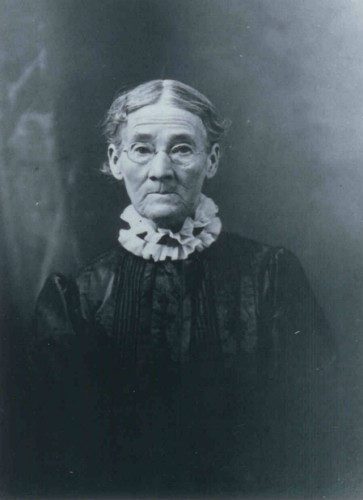
1834 1925
Walking alongside her family’s wagon was 13 yr. old Elizabeth Jane Kimsey, the daughter of John and Susannah (Brock) Kimsey. The family settled in Yamhill Co. and at the age of 14 Elizabeth was wed. The following year her father passed away, and her mother married Henry H. Hyde. Elizabeth and her new husband lived with his parents and were farmers.
The rest of her family moved to Yreka, CA where Henry established a stock ranch. In the 1860’s Henry Hyde moved his family once again, this time to Prairie City, Oregon, a move that would be an influence on Elizabeth later in her life. The journey to Prairie City coincided with Nathan and Esther Fisk’s own journey from Shasta Co. to Prairie City, and we’ll see how these families came together later in this story.
Oregon Trail – 1848

As is often the case, a family’s decision to leave their home, face the hardship of the Oregon Trail, and establish a new home in the Promised Land of the Oregon Territory, was influenced by an adventurous family member who struck out on their own. Such is the case of Benjamin Quick Tucker, who set out with his wife Clarinda and three children on the trains of 1844.5
He settled in Free Orchards, the original name for present day Cornelius, Oregon. This rather unusual name came from the many fruit trees growing on Benjamin Q. Tucker’s Donation Land Claim which encompasses most of the town north of Baseline Street which is the present day Tualitin Valley Highway. (See source #6 for the full story of how Benjamin’s fruit orchard evolved to become the town of Cornelius, a suburb of Portland, Oregon).
I can imagine his letters home enticing more of the family to Oregon, and in 1848 another 21 members of the Tucker family began the journey west. Indian Agent Thomas Fitzpatrick, in a letter to Thomas H. Harvey, superintendent of Indian Affairs, made note of the emigrants he encountered. He commented, “Three days after passing the forks of Platte River, we commenced meeting the emigrants for Oregon and California and between that point and West Port met 364 wagons moving along quietly in small parties of from 12 to 30 wagons, some few parties were yet behind which we did not meet….The number of souls which I supposed to be for Oregon, about 1700, that for California, 150. I have not taken the Mormons into account here, as I know nothing of their movements.”7
The large wagon train was broken into five companies, each one traveling a day or more behind the other. The Tucker family most likely traveled with Company Five, which lingered far behind the advance companies and caused much concern for the Captains who feared they had fallen too far behind. But the journey was successful, and most of Company Five settled in the lower Willamette Valley, in or near Silverton, Oregon.
Our focus though, is on the elders of the Tucker family, brothers Samuel Tucker 1782-1867 and Benjamin “Ben” Tucker 1775-1867. Their deaths are recorded as the same day, 22 Feb 1867, and to this day, I have not yet found out what happened that these two brothers passed on the same day. But they left a legacy of family, they helped shape what the towns in the Willamette Valley would become, and they would live to so more of their family make the journey across the Oregon Trail in a third wave of Tuckers to find the fertile soil of the Oregon Territory.
Oregon Trail – 1850
The Zumwalt’s expansive family began when Johann Wilhelm Andreas “Andrew” Zumwalt immigrated from Prussia to Virginia in 1737. The family’s role in American history is woven through the American Revolution, the War of 1812, the Civil War, through the establishment of some of the first settlements in America, and through politics, commerce, and eventually as part of the settling of the West. Eventually settling in Missouri, many families there turned their eyes toward the Oregon Trail and the dreams of a new life in those fertile lands.
Word of Christopher Zumwalt’s praise of the Oregon Territory got back to Missouri and his uncle Andrew Zumwalt, along with extended family members, took to the trail the year following Christopher’s journey in 1846, settling in Lane Co. near present day Eugene, Oregon. In 1850 the third wave of Zumwalt’s, consisting of 30 members of the family and the families of Zumwalt’s who had already married and begun their own families, embarked on the long journey.
John and Solomon Zumwalt, brothers to Andrew, led their large families west, but it was not without peril. They had only gotten as far as Nebraska when cholera struck the train. John lost his wife Mary and three of his daughters. They buried them in sight of Chimney Rock and he carried on to Salt Lake with his two remaining daughters, Lucy and Lydia. The Zumwalt clan overwintered in Utah before moving on to Oregon in 1851. John settled in Troutdale, Oregon, where he died in 1871.

Solomon’s family arrived in Oregon in June of 1851. Or, to put it in his own, unedited words, “We finly recht the Umatila (Oregon) the 16, lade over som. Finly got to the Dals (Dalles on the Columbia River) on the 28. The sno was in the caskads so the temes codant cros (teams couldn’t cross) in les then a month. So i broat my famly down to Portland by water, told the bois to stay at the Dals one month and i wood go over and help bring the wagons acros. I rentid a haus in Portland for my famly, stade my time, startid to cros the cascades, met them in the mountan. The had got along wel. So we all got together again in Portland. Even my dog that was with the bois when he found my wife and children, he was the hapest anamel i amost ever seed. We stad severl dais in Portland. The fourth of July com of while we war thar. So we started for Poke (Polk) county. I had too brothers living on the big Lucmut (Luckiamute). We finly got up thar wi Andrew and John.”8

Elizabeth, daughter of Solomon and Nancy, was 20 years old when she traveled the Oregon Trail with her family and her husband and their first child Rachel, age 1. Like the others in her family, her family settled in Lane Co., and her husband James McCabe was a sheriff in the early 1850’s.

After 12 children and 30 years of farming and ranching in the Mohawk Valley, north of Springfield, Oregon, James decided it was time to start anew. He and Elizabeth, with the children still at home, moved to Camas Prairie, Nez Perce Co., Idaho to begin farming there.
In 1877 war broke out between the non-treaty Nez Perce and the U.S. Army, forcing the non-treaty Nez Perce on a 126-day journey that spanned over 1,170 miles and through four different states. The series of engagements between certain bands of Nez Perce, their allies, and the U.S. Army in the summer of 1877 are events that continue to resonate in the hearts and minds of the Nez Perce to this day. In the coming years the reduction of lands that had been set aside for the Nez Perce opened the doors for people like James Zumwalt who arrived on Camas Prairie two years after the Nimíipuu blood had been spilt.
Failing there, James moved his family NW into Latah County, establishing a home alongside the ID/WA border near Farmington, Washington.
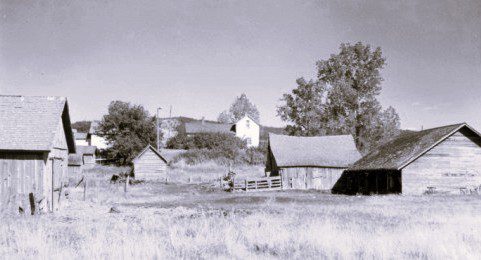
Their daughter, Sarah Francis “Fanny” McCabe was back in Mohawk Valley, Oregon. Married at age 17 and the mother of three children, she abandoned her husband and children around 1879 and was found to be in Spokane Falls, Washington. In 1880 she is listed as being with her parents on Camas Prairie.
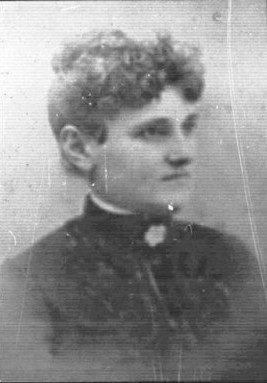
Oregon Trail – 1853
A third wave of the Tucker family came to Oregon in 1853. Thomas Tucker, son of Samuel Tucker (Oregon Trail 1848), and his own son George had made the journey once already in 1849, traveling by ox to California where they mined gold for a couple of years. In 1851 they returned home “via water”8 though it is unknown the precise route they took. In 1853 they decided to venture west again – Thomas, his wife Hester (Lemon) Tucker, and their sons George and William. They joined other family members farming throughout Lane Co., Oregon, with William settling in the Mohawk Valley.
George, ever the restless one, actually travelled back to Illinois a third time in 1857 and married Sarah Lemon, the daughter of his mother’s brother. Sarah and George had three girls, and then once again George traveled west Oregon’s Willamette Valley. By 1880 he moved it large family again, this time to farm outside Garfield, Washington. After a few years there, he moved the family a few miles SE of Moscow, Idaho, working 120 acres of farmland and becoming renowned for the finely blooded Percherons he raised there.
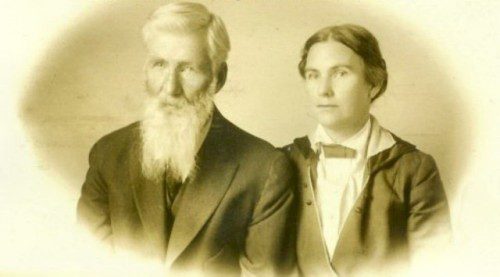
On the trail with his father and brother was William Brown Tucker, age 11 as he walked alongside the wagons. Growing up in the Willamette Valley, he eventually got his own farm about eight miles east of Eugene, Oregon. He first married a gal from the Mohawk Valley, and when abandoned by her, he was remarried to Felina Hendricks, who had been born in Walterville, Oregon and had spent most of her life along the McKenzie River before starting a family with William in the Willamette Valley.
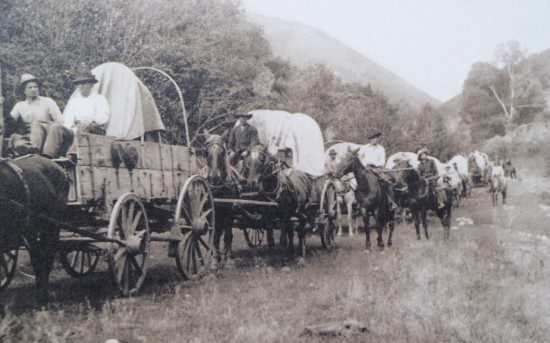
The Blending of Families
Brief vignettes of Oregon Trail families over nearly a ten-year period. Shared hardships and shared dreams of a new life. And unknown to them at the time, destined to become family to one another.
Christopher Zumwalt (OT 1845) had a son born in Polk Co., Oregon whose name was Henry Oliver Zumwalt. Later in his life Henry found himself looking over the vast prairie lands of NE Oregon and settled his family there. This landscape treasure now bears his name as the Zumwalt Prairie. Through his daughter Josie, to his granddaughter Joy, who married Vernon Warnock, we find connections to other prominent families in the early history of the Oregon Territory – the Warnocks, Shields, Maxwells and my own Fisks.

Elizabeth Zumwalt (OT1850) moved out of the Willamette Valley when her husband James McCabe decided to head to eastern Oregon, and as we saw above, settled on Camas Prairie, Idaho, then to a farm on the ID/WA border near Farmington. Two McCabe sisters married two Tucker brothers. Sarah McCabe, who had abandoned her husband and children back along the Mohawk River in Oregon, ended up in Latah Co., Idaho with her parents, and then disappeared from the records. There are no records yet found on the time or place of her death, while other McCabe and Tucker gravesites are scattered from Latah Co., Idaho to Lane Co., Oregon.
William Brown Tucker (OT 1853) leads us to the extensive Tucker family (OT 1846, 1847, 1848, 1853). His brother George ended up not far from the McCabes in Latah Co., Idaho, raising prized Percheron horses on his farm near Moscow, Idaho and is buried in the Moscow Cemetery. William’s other brother Wilbert, who married Sarah McCabe’s sister Mary Ann, is buried in Oaksdale, Washington, not far from Farmington.
Benjamin Quick Tucker (OT 1848) had a son Henry, who married Elizabeth Kimsey. Their daughter Adelia was married first to Almon Gillette, whose father Almon Virgil Gillette traveled the Oregon Trail in 1852 in the company of the Gillenwaters (OT 1852). The Gillenwaters are connected to the Wilson and Chenowith families of eastern Oregon. Adelia then married Daniel Walter Fisk, whose father was one year old when the Fisks (OT 1852) traveled the Trail.

The tangled and intertwined branches of a family tree. Some of the connections are by blood, some through the convoluted influence of deaths, divorce, and marriage. But they are indisputably family. Their stories add a richness to my own immediate family that I could not have imagined if I confined myself to the research of strict bloodline connections. I have a deeper understanding of the history of Oregon Territory and the role that various family members had in creating that history. I have a greater appreciation for the life they led, the hardships endured, and their success in building family, community and commerce from, Tillamook Bay on the Oregon coast to the camas prairies of the Nimíipuu in Idaho.
People who made it to Oregon sometimes found themselves becoming part of new extended families due to marriages, adoptions, or simply living together in close-knit communities. Blending families also required adapting to new cultural and social dynamics, as settlers from different backgrounds learned to live and work together.
It was a time of resilience, resourcefulness, and cooperation, as pioneers came together to build new lives and support each other in their new homes.
Surnames Represented:
- Aldrich
- Cant
- Chenowith
- Cooley
- Fisk
- Gillenwater
- Gillette
- Hendricks
- Hughart
- Hyde
- Kimsey
- Maxwell
- McCabe
- Officer
- Shields
- Simpson
- Steele
- Tucker
- Warnock
- Wilson
- Zumwalt
Sources:
- Flora, Stephenie. “Emigrants to Oregon, 1945” http://www.oregonpioneers.com/1845.htm
- Ibid.
- Flora, Stephenie. “The Transcribed Diary of Eli Casey Cooley as he came across the Oregon Trail and the Meek Cutoff in 1845 by Michael F. and Mary Lou Cooley for the Officer-Cooley Family Association” http://www.oregonpioneers.com/CooleyDiary.htm
- Ibid.
- Lang Herbert. “History of the Willamette Valley,” p.661-662
- Stewart, Eric, “Growth of early Cornelius due to arrival of railroad” http://www.grovenet.org/Cornelius/City/cornelius-history.html
- Flora, Stephenie. “Oregon in 1848” http://www.oregonpioneers.com/1848.htm
- Zumwalt, Solomon, “The Biography of Adam Zumwalt by his Son, Solomon Zumwalt in 1850“. 1880. In the collection of the Lane County History Museum, Eugene, Oregon.
- “An illustrated History of North Idaho: embracing Nez Perces, Idaho, Latah, Kootenai and Shoshone Counties, State of Idaho.” Western Historical Publishing Co., 1903, contributed by Univ. of California Libraries.

